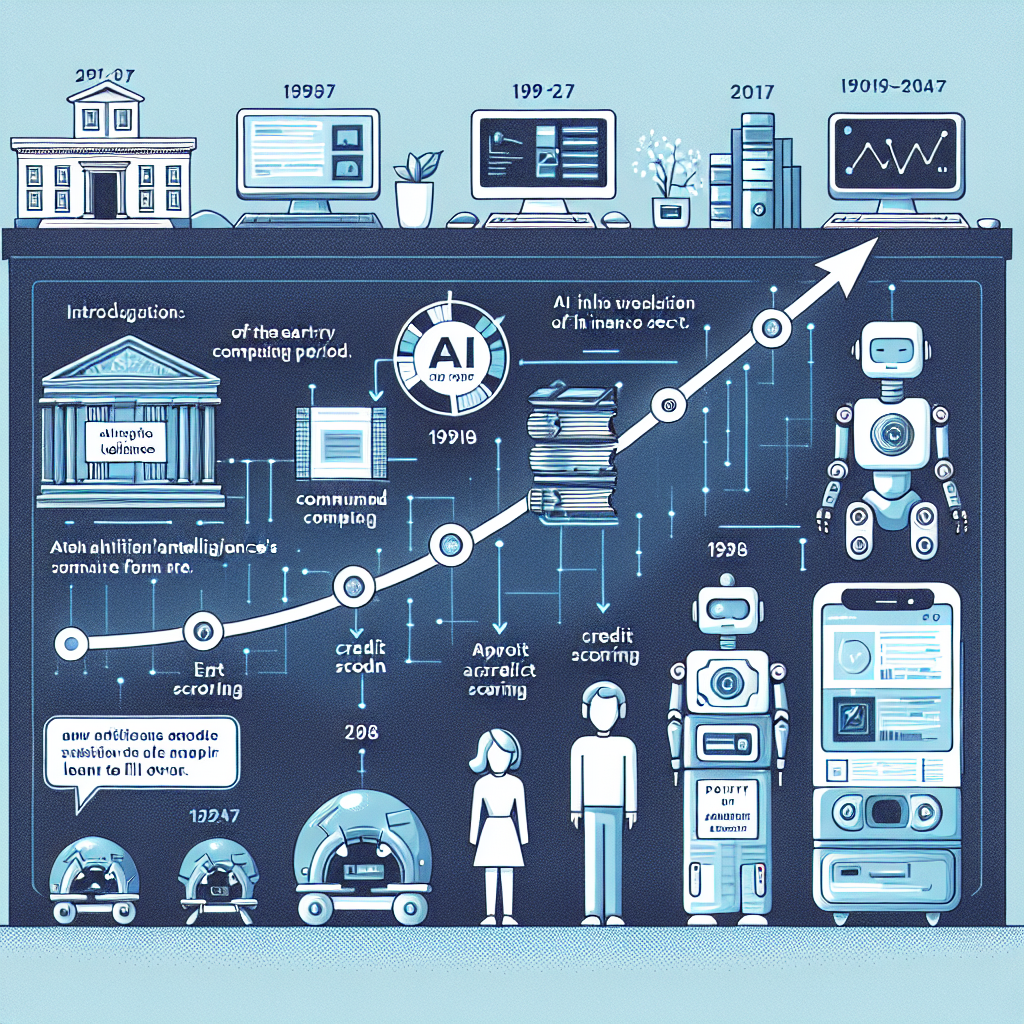The Evolution of AI in Credit Scoring and Loan Approval
In recent years, the use of artificial intelligence (AI) in credit scoring and loan approval processes has gained significant traction. AI technologies, such as machine learning algorithms, have revolutionized the way financial institutions evaluate the creditworthiness of individuals and businesses. This evolution has brought about more efficient, accurate, and fair lending decisions, benefiting both lenders and borrowers alike.
Traditionally, credit scoring and loan approval processes relied heavily on manual underwriting and analysis, which was time-consuming and prone to human error. With the advent of AI, lenders can now automate various aspects of the credit evaluation process, making it faster, more accurate, and more consistent.
One of the key advantages of using AI in credit scoring is its ability to analyze vast amounts of data in real-time. Machine learning algorithms can process and analyze diverse data sources, such as credit reports, bank statements, tax returns, and even social media profiles, to assess an individual’s creditworthiness. This comprehensive analysis allows lenders to make more informed lending decisions, resulting in lower default rates and higher profitability.
Moreover, AI-powered credit scoring models can identify patterns and trends in the data that may not be apparent to human underwriters. By leveraging historical data and predictive analytics, these models can predict the likelihood of an individual defaulting on a loan with a high degree of accuracy. This enables lenders to offer loans to individuals who may have been overlooked by traditional credit scoring methods, such as those with limited credit history or non-traditional sources of income.
Another benefit of using AI in credit scoring is its ability to reduce bias and discrimination in the lending process. Traditional credit scoring models often rely on subjective criteria, such as age, gender, and ethnicity, which can result in unfair lending practices. AI algorithms, on the other hand, are designed to be objective and data-driven, ensuring that lending decisions are based on merit rather than personal characteristics.
In addition to credit scoring, AI is also being used to streamline the loan approval process. Chatbots and virtual assistants powered by AI technology can interact with borrowers, answer their questions, and guide them through the loan application process. This not only improves the customer experience but also speeds up the approval process, allowing borrowers to access funds more quickly.
Furthermore, AI can help lenders automate the verification of borrower information, such as income, employment, and assets. By analyzing data from various sources, such as bank statements and pay stubs, AI algorithms can verify the accuracy of the information provided by borrowers, reducing the risk of fraud and improving the efficiency of the underwriting process.
Despite the many benefits of using AI in credit scoring and loan approval, there are some challenges that lenders need to overcome. One of the main challenges is the lack of transparency in AI algorithms, which can make it difficult to understand how lending decisions are being made. To address this issue, regulators are increasingly requiring lenders to provide explanations for their AI-driven decisions, in order to ensure fairness and compliance with regulations.
Another challenge is the potential for AI algorithms to perpetuate biases present in the data used to train them. For example, if historical data contains biases against certain groups of individuals, AI algorithms may inadvertently learn and perpetuate these biases in their lending decisions. To mitigate this risk, lenders need to carefully monitor and audit their AI algorithms to ensure that they are making fair and unbiased lending decisions.
In conclusion, the evolution of AI in credit scoring and loan approval processes has brought about significant improvements in efficiency, accuracy, and fairness. By leveraging AI technologies, lenders can make more informed lending decisions, reduce default rates, and improve the customer experience. While there are challenges that need to be addressed, the benefits of using AI in credit scoring far outweigh the risks, making it a valuable tool for financial institutions looking to enhance their lending practices.
FAQs
Q: How is AI used in credit scoring?
A: AI is used in credit scoring to analyze vast amounts of data in real-time, identify patterns and trends, predict the likelihood of default, reduce bias and discrimination, and streamline the loan approval process.
Q: What are the benefits of using AI in credit scoring?
A: The benefits of using AI in credit scoring include faster, more accurate, and more consistent lending decisions, lower default rates, higher profitability, reduced bias and discrimination, and improved customer experience.
Q: What are the challenges of using AI in credit scoring?
A: The challenges of using AI in credit scoring include lack of transparency in algorithms, potential biases in data, and regulatory compliance requirements.
Q: How can lenders mitigate the risks of bias in AI algorithms?
A: Lenders can mitigate the risks of bias in AI algorithms by carefully monitoring and auditing their algorithms, providing explanations for lending decisions, and ensuring compliance with regulations.
Q: What are the future trends in AI in credit scoring?
A: Future trends in AI in credit scoring include the use of alternative data sources, such as social media profiles and online behavior, to assess creditworthiness, and the development of explainable AI algorithms to improve transparency and accountability.

